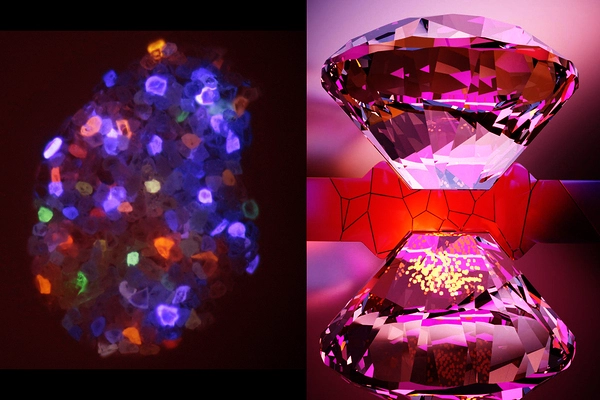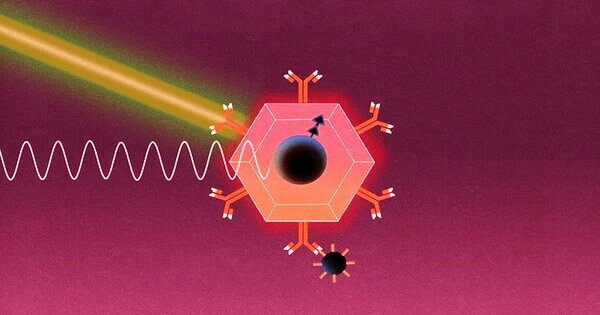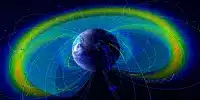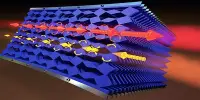Quantum sensing is a sophisticated sensor technology that vastly improves the accuracy with which we measure, navigate, study, explore, see, and interact with the world around us by sensing changes in motion as well as electric and magnetic fields. Because quantum sensing uses atomic properties to measure activity in the physical world, the significantly more accurate data it provides can help future versions of existing technologies function better, collecting and using better information to produce better results.
Researchers measured tiny magnetic fields at an unprecedented rate. This research, which uses ultrafast spectroscopy to monitor spins at nitrogen-vacancy centers, could lead to extremely accurate future quantum computers.
Scientists from the University of Tsukuba demonstrated how ultrafast spectroscopy can be used to improve the temporal resolution of quantum sensors. They demonstrated that magnetic fields can be measured even over very short time scales by measuring the orientation of coherent spins inside a diamond lattice. This research could lead to the advancement of the field of ultra-high accuracy measurements known as quantum metrology, as well as “spintronic” quantum computers that operate on electron spins.
With nonlinear opto-magnetic quantum sensing, we will be able to measure local magnetic fields, or spin currents, in advanced materials with high spatial and temporal resolution.
Muneaki Hase
With nanometer resolution, quantum sensing allows for extremely accurate monitoring of temperature, magnetic and electric fields. New avenues in nanotechnology and quantum computing may become viable by observing how these properties affect the energy level differences within a sensing molecule. However, due to limited luminescence lifetimes, the time resolution of conventional quantum sensing methods has previously been limited to the microsecond range. A new approach is required to aid in the refinement of quantum sensing.
A team of researchers led by the University of Tsukuba has now developed a new method for implementing magnetic field measurements in a well-known quantum sensing system. Nitrogen-vacancy (NV) centers are diamond defects in which two adjacent carbon atoms have been replaced by a nitrogen atom and a vacancy. The spin state of an extra electron at this site can be read or coherently manipulated using light pulses.

“For example, even at room temperature, the negatively charged NV spin state can be used as a quantum magnetometer with an all-optical readout system,” says first author Ryosuke Sakurai. To put their method to the test, the team used a “inverse Cotton-Mouton” effect. The normal Cotton-Mouton effect occurs when a transverse magnetic field induces birefringence, which can cause linearly polarized light to become elliptical. The scientists used light with different polarizations to create tiny controlled local magnetic fields in this experiment.
“With nonlinear opto-magnetic quantum sensing, we will be able to measure local magnetic fields, or spin currents, in advanced materials with high spatial and temporal resolution,” senior author Muneaki Hase and his colleague Toshu An from Japan Advanced Institute of Science and Technology explain. The team hopes that this work will contribute to the development of quantum spintronic computers that are sensitive to spin states rather than just electrical charge, as are current computers. The findings may also pave the way for new experiments to observe dynamic changes in magnetic fields or even single spins under realistic device operation conditions.
Quantum sensors use “quantum resources” to measure changes in atoms with greater precision than any traditional measurement strategy. Quantum resources are physical properties that do not exist in classical physics, such as entanglement, quantum interference (also known as superposition), discrete states, and coherence. Quantum optics, for example, typically relies on measurements using various aspects of light, or photons, but quantum sensors can also be made from other mediums, such as atoms in free space and certain solid state devices.
While the promise of Quantum Sensing grows, the ability to apply it to solutions that can be implemented ahead of the curve necessitates development environments that encourage aggressive innovation. Given the broad appeal of the core technology, it is expected that significant progress in the field will be made through advantageous partnering to accelerate real-world deliverables.
















